Landscape
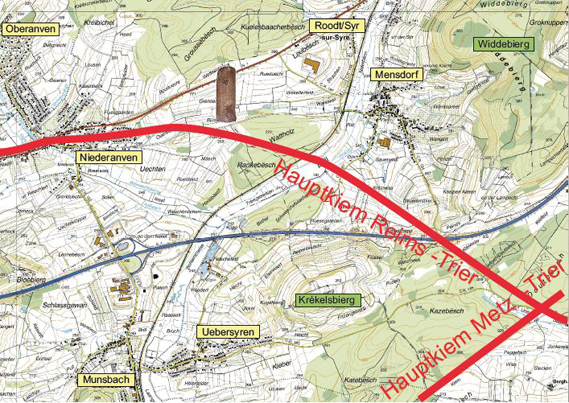
Important roman roads in the region of Niederanven
The landscape between Niederanven, Mensdorf and Roodt/Syr is characterised by the flat hills of the Pseudomorphosis Late Triassic layer, originating 220 millions of years ago. This layer is formed by varicoloured clay with gypsum deposit, which gives a red to a brown gray colour to the weathered soils. The heavy and cold muddy soils are often covered with woods or are used as pastures. Typical for this Pseudomorphosis-Late Triassic landscape are the so called “Mardellen”, round basins in the ground, partly filled with water.
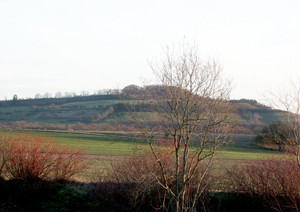
View on the Kréckelsbierg
In very old times the Keuper landscape was still covered by the Luxembourg sandstone layer, which had however been ablated over millions of years. The only leftover witnesses of the former Sandstone layer are the Widdebierg and the Kréckelsbierg, protecting the Late Triassic layer against erosion.
The Roman Road
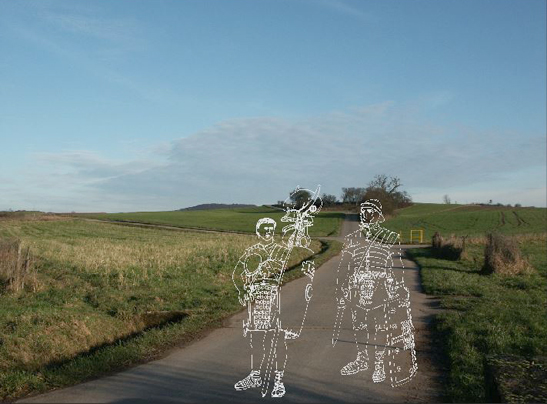
Flat undulated mountain ranges are characteristic for the landscape. The former Roman road between Mensdorf and Niederanven today is an appreciated bicycle lane.
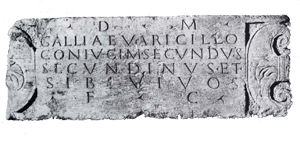
A tombstone with roman inscriptions found in Hostert.
Niederanven, the former Andethanna, was situated at on of the most important Roman roads of the region. The connection road (Kiem) between Treves and Reims came from Luxembourg City over the Senningerbierg to Niederanven, where it crossed the actual route de Trèves, rue de Mensdorf and rue de Munsbach in order to continue to the Moselle region. The Kiem had probably been constructed during the reign of the emperor Claudius around the year 44.
Clay bricks discoveries
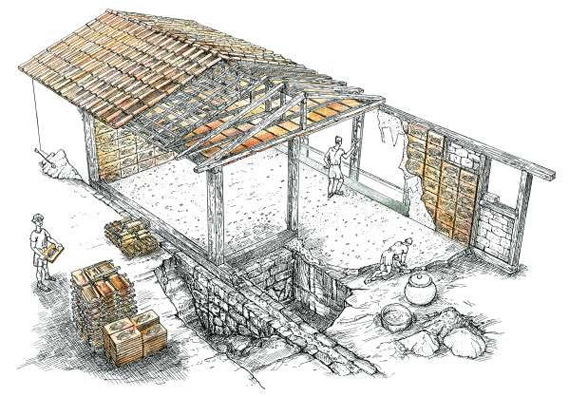 Roman roofs were made of clay roofing tiles in form of a plate (tegulae) and a covering tile (imbrices). The covering tiles were resting on the plates in order to keep everything in place on a wooden roof rack. Only few tiles were fixed by iron nails, as the covering tiles were fixed with mortar.In the distance of this old Roman Road, between Mensdorf and Niederanven were discovered many of those tiles, probably providing from one single outbuilding. The tile manufactories had first been run by militaries and later on also by private individuals. The derivation of the tiles can normally be determined by the stamp put on by the manufacturer.
Roman roofs were made of clay roofing tiles in form of a plate (tegulae) and a covering tile (imbrices). The covering tiles were resting on the plates in order to keep everything in place on a wooden roof rack. Only few tiles were fixed by iron nails, as the covering tiles were fixed with mortar.In the distance of this old Roman Road, between Mensdorf and Niederanven were discovered many of those tiles, probably providing from one single outbuilding. The tile manufactories had first been run by militaries and later on also by private individuals. The derivation of the tiles can normally be determined by the stamp put on by the manufacturer.
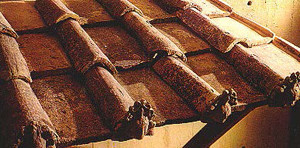 The tile discoveries were made on a site called “Uechten”. The surrounding site names, often combined with the word “Uecht” (for example Uechten, Rouduecht) indicate us the presence of a country estate in the Middle Ages, subordinated by the compulsory labour. In fact those domains had most often been set up where once Roman villas had stood before. This is why it is supposed that Roman farms had been present once on this site.
The tile discoveries were made on a site called “Uechten”. The surrounding site names, often combined with the word “Uecht” (for example Uechten, Rouduecht) indicate us the presence of a country estate in the Middle Ages, subordinated by the compulsory labour. In fact those domains had most often been set up where once Roman villas had stood before. This is why it is supposed that Roman farms had been present once on this site.
